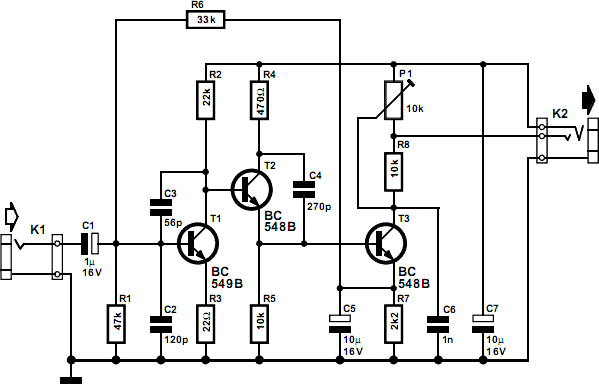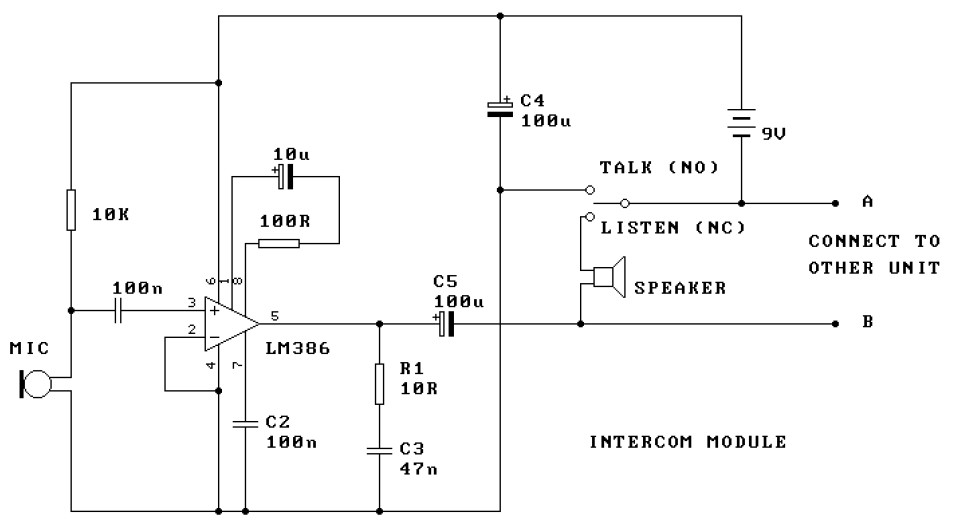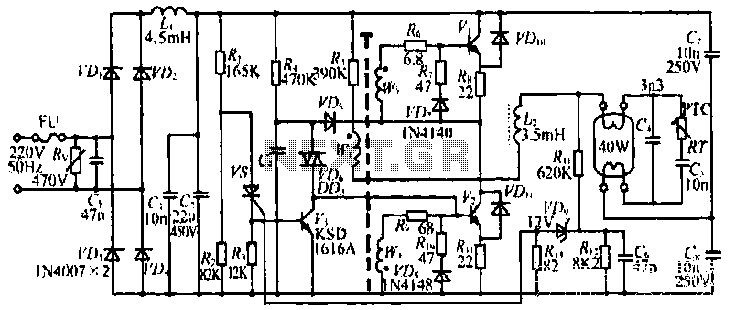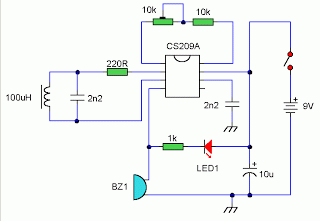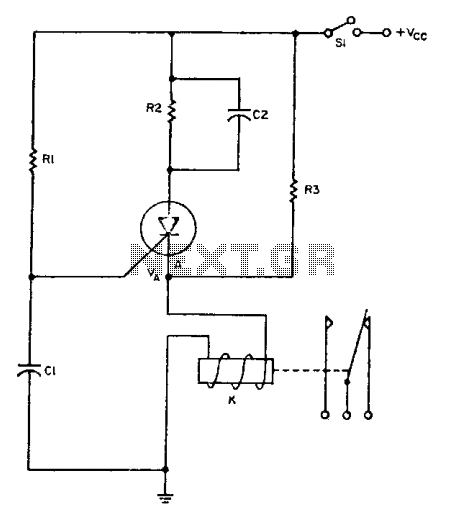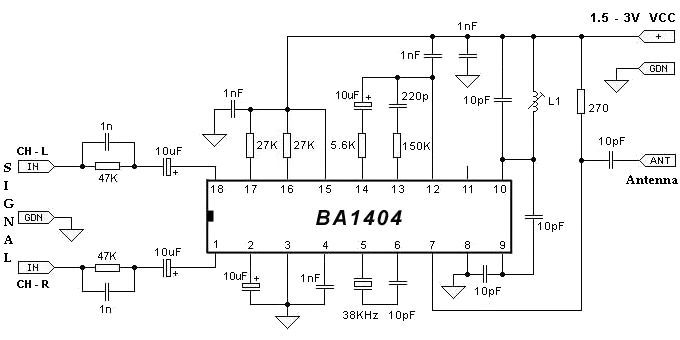
7-Segment (Led) Display Driver Circuit
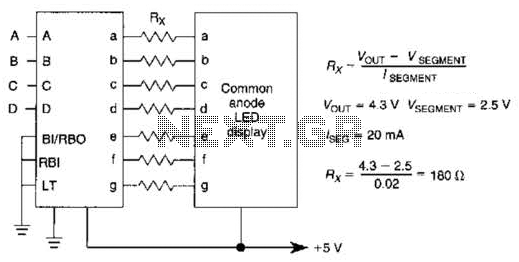
An IC1, such as the 7447, drives a common anode 7-segment LED display. The current-limiting resistor R must restrict the segment current to the rated value at the maximum supply voltage. A sample calculation is provided.
The 7447 integrated circuit is a BCD to 7-segment decoder/driver that converts binary-coded decimal (BCD) inputs into the corresponding output signals that illuminate specific segments of a 7-segment display. In a common anode configuration, the anode of each LED segment is connected to a positive voltage supply, while the cathodes are connected to the output pins of the 7447 IC. When the output of the IC goes low, it allows current to flow through the respective segment, lighting it up.
To ensure proper operation and prevent damage to the LED segments, a current-limiting resistor (R) is necessary. The resistor value can be calculated using Ohm's law and the specifications of the LED display. The maximum forward voltage (Vf) of the segments and the supply voltage (Vs) must be taken into account. The formula to calculate the resistor value is:
R = (Vs - Vf) / If
Where:
- R is the resistance in ohms (Ω),
- Vs is the supply voltage in volts (V),
- Vf is the forward voltage drop across the LED segment in volts (V),
- If is the desired forward current through the LED segment in amperes (A).
For example, if the supply voltage is 5V, the forward voltage drop of the LED is 2V, and the desired forward current is 20mA (0.02A), the calculation would be:
R = (5V - 2V) / 0.02A = 150Ω
This means a 150Ω resistor should be used to limit the current through each segment to the rated value, ensuring optimal performance and longevity of the LED display. Proper selection of the resistor is critical in applications where variations in supply voltage may occur, as it helps maintain consistent brightness and prevents excessive current that could potentially damage the LEDs. An IC1 like a 7447 drives a 7-segment common anode LED display. Current, limiting resistor R should limit the segment current to the rated value at maximum supply voltage. A sample calculation is shown.
The 7447 integrated circuit is a BCD to 7-segment decoder/driver that converts binary-coded decimal (BCD) inputs into the corresponding output signals that illuminate specific segments of a 7-segment display. In a common anode configuration, the anode of each LED segment is connected to a positive voltage supply, while the cathodes are connected to the output pins of the 7447 IC. When the output of the IC goes low, it allows current to flow through the respective segment, lighting it up.
To ensure proper operation and prevent damage to the LED segments, a current-limiting resistor (R) is necessary. The resistor value can be calculated using Ohm's law and the specifications of the LED display. The maximum forward voltage (Vf) of the segments and the supply voltage (Vs) must be taken into account. The formula to calculate the resistor value is:
R = (Vs - Vf) / If
Where:
- R is the resistance in ohms (Ω),
- Vs is the supply voltage in volts (V),
- Vf is the forward voltage drop across the LED segment in volts (V),
- If is the desired forward current through the LED segment in amperes (A).
For example, if the supply voltage is 5V, the forward voltage drop of the LED is 2V, and the desired forward current is 20mA (0.02A), the calculation would be:
R = (5V - 2V) / 0.02A = 150Ω
This means a 150Ω resistor should be used to limit the current through each segment to the rated value, ensuring optimal performance and longevity of the LED display. Proper selection of the resistor is critical in applications where variations in supply voltage may occur, as it helps maintain consistent brightness and prevents excessive current that could potentially damage the LEDs. An IC1 like a 7447 drives a 7-segment common anode LED display. Current, limiting resistor R should limit the segment current to the rated value at maximum supply voltage. A sample calculation is shown.
